The Plucky Squire is the story of the heroic titular squire, Jot. Along with his friends, Jot fights the evil Humgrump in a series of popular children's stories. In these stories, good always triumphs, and evil is always defeated. However, Humgrump somehow found out that he is living in a story and discovered a dangerous magic that allows him to change the story. It is up to Jot and his friends to figure out a way to stop Humgrump's latest dastardly plan before he ruins the stories for all time — and in doing so wrecks the imagination of Jot's fans around the world.
On the surface, The Plucky Squire has a very Zelda-like feel. The default world of Mojo is an isometric action game. Jot is armed with his sword, his wits, and a whole lot of pluck. The basic gameplay feels like it was taken directly from Link to the Past,with simple rapid sword slashes and even the ability to throw your sword, very much like Link's sword beam. There are some more modern twists, such as a dodge-roll, but they fit extremely well into the basic concept. Also like Zelda, the game sometimes switches to a 2D platformer where you also do some jumping puzzles. It's an incredibly easy game to pick up and play.
Early on, Jot is kicked out of the storybook he lives in. In addition to this being a bit of a world-shaking revelation, it gives Jot the ability to take on things from a new perspective — as in a literally 3D perspective. When Jolt leaves the book, the game changes to a 3D platformer, and Jot can adventure and explore wherever the book is currently situated, which is usually a messy desktop. Once out of his book Jot isn't limited to returning to the book; he can venture into anything drawn, ranging from the cute art on a mug to a Magic the Gathering playing card. He can hop into those and travel along the 2D artwork. He can even things like climb up a wall — as long as a drawn picture is attached to it.
This is important because there are special metamagic items located outside of the book that, once found, allow Jot to manipulate the book. He can do things like flip the pages of the book, tilt the book, or use stamps on the book to freeze objects in place. Many of the game's puzzles involves manipulating the book. If there's an item you need to solve a puzzle but it isn't on the page you're on, maybe you can go back to an earlier page, grab it, drag it into the real world, and then pop back onto the page you need. If there's something too heavy to move, you can tilt the book world and made it slide of its own accord.
In addition to being able to leave the book, once the metamagic of the book comes into play, Jot can also adjust things inside the book. For example, the writing on the page is not static. By hitting a word with his sword, Jot can knock it loose and leave an empty space. That empty space can then be filled by other words you find, which in turn can adjust the environment. For example, a big stone block can become a big metal block, and then it can be used to smash down a wall. Then it can become a big glowing block to light up an area. Then it becomes a big cheese block to distract a giant rat.
In addition to puzzles like this, Jot or his allies will occasionally come across obstacles that require more of an unusual touch. These are usually presented in the form of silly minigames. The first one shifts the game into a 2D Punch-Out clone where you fight a Honey Badger to rescue a bee. Another may become a side-scrolling shooter or a rhythm minigame. These tend to only occur a few times per gimmick but are usually short and sweet. (An in-game menu option allows you to skip them if you don't like the play style.)
The Plucky Squire is a linear adventure that focuses more on introducing new ideas than building on older ones. While some of the basic gameplay elements return, a lot of the game's time is spent on new gimmicks and minigames. The result is that nothing ends up too developed. Most of the puzzles tend to revolve around a single area and gimmick. This isn't a bad thing, but it makes things feel a little thin sometimes. There are a lot of really cool gimmicks that I'd love to have seen integrated more.
At its heart, The Plucky Squire is very much a game for kids. There's enough charm and personality for adults to enjoy, but it's intended for a young crowd. A lot of puzzles and challenges are intended to have amusing outcomes or slightly educational results rather than be experiences to wrack your brains. If you want to utilize the feature, there's even a helpful little dude who hangs out near every major puzzle and gives you the solution. It's an experience more than a challenge, but that is exactly what the title seems to be aiming for. What The Plucky Squire excels at is being charming. It's constantly cute, funny and creative. Each new page offers something new, and it's one of the easiest games to recommend to parents.
A lot of that comes down to the visuals. The Plucky Squire is an absolute delight in motion. The hand-drawn storybook art style looks fantastic on its own, perfectly capturing the feel and aesthetic of a kid's book. The way the art style constantly shifts is also wonderful. Visit other pieces of art, and you'll see each has its own distinct flavor. If something is brought into Jot's world, it retains its own distinct look, whether it's from another drawing or from the real world. Jot's shift from a cute 2D character to a charming 3D action figure feels pitch perfect. The audio has an omnipresent pleasantly voiced British narrator to give the entire story a feel of a children's cartoon from the UK, and some delightful music also sets the tone and mood.
With its aesthetics, tone, and gameplay, The Plucky Squire is a near-perfect game for younger kids, and I'd recommend it without hesitation. Add to that the boatload of charm, and it's very much a title that a parent can enjoy as much as their child does. It lacks the bite of a Zelda game, so if you need your games to be difficult, then this likely isn't for you. However, if you're just looking for the video game version of reading a charming storybook, then The Plucky Squire knocks it out of the park.
Score: 8.0/10
More articles about The Plucky Squire



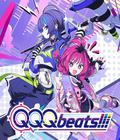
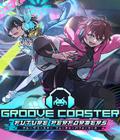
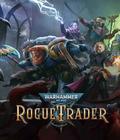
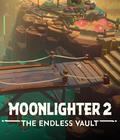
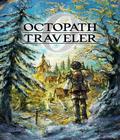
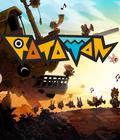
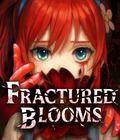

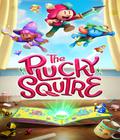 Storybook characters discover a three-dimensional world outside the pages of their book and must jump between 2D & 3D realms to save their friends in this charming action-adventure.
Storybook characters discover a three-dimensional world outside the pages of their book and must jump between 2D & 3D realms to save their friends in this charming action-adventure.





















